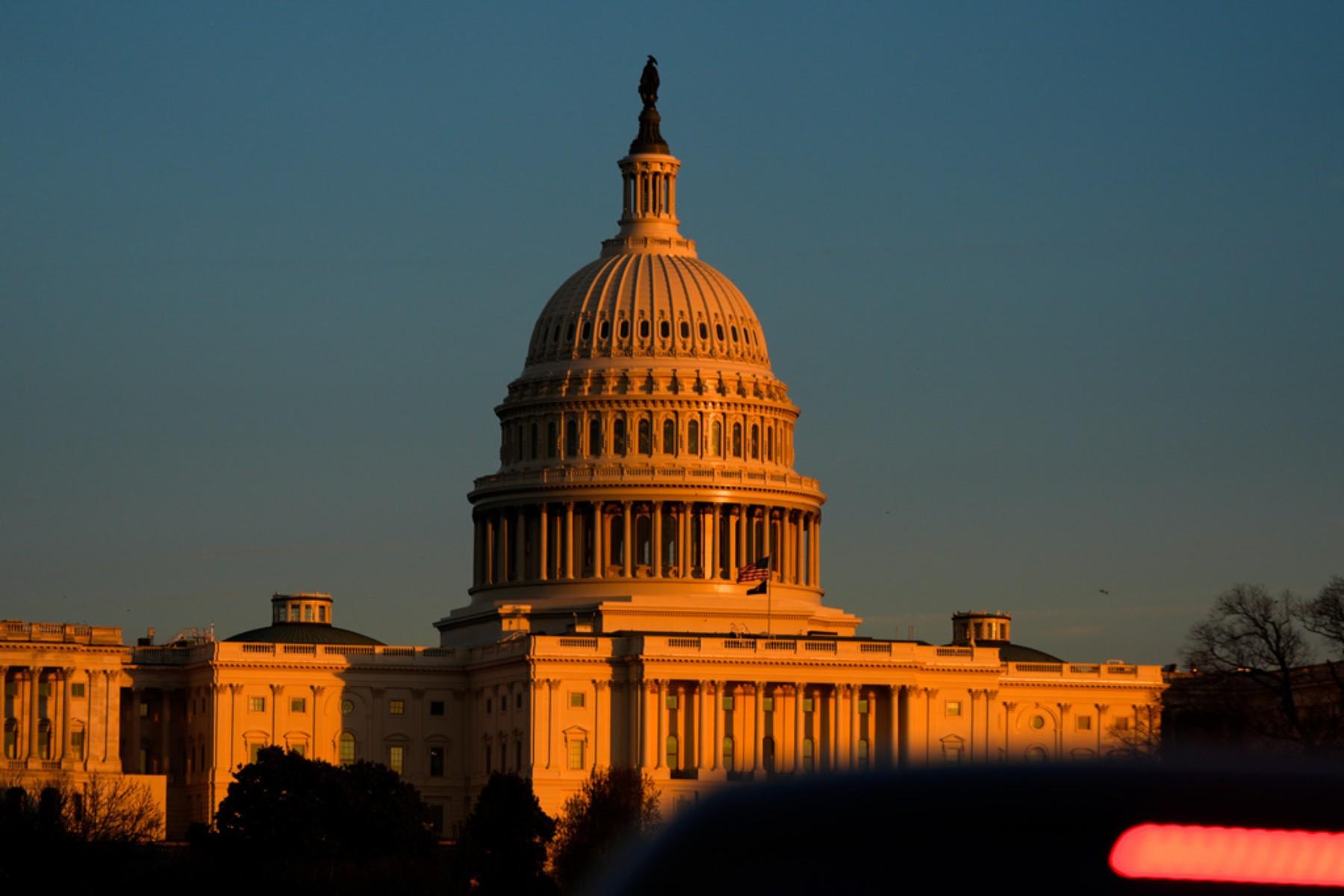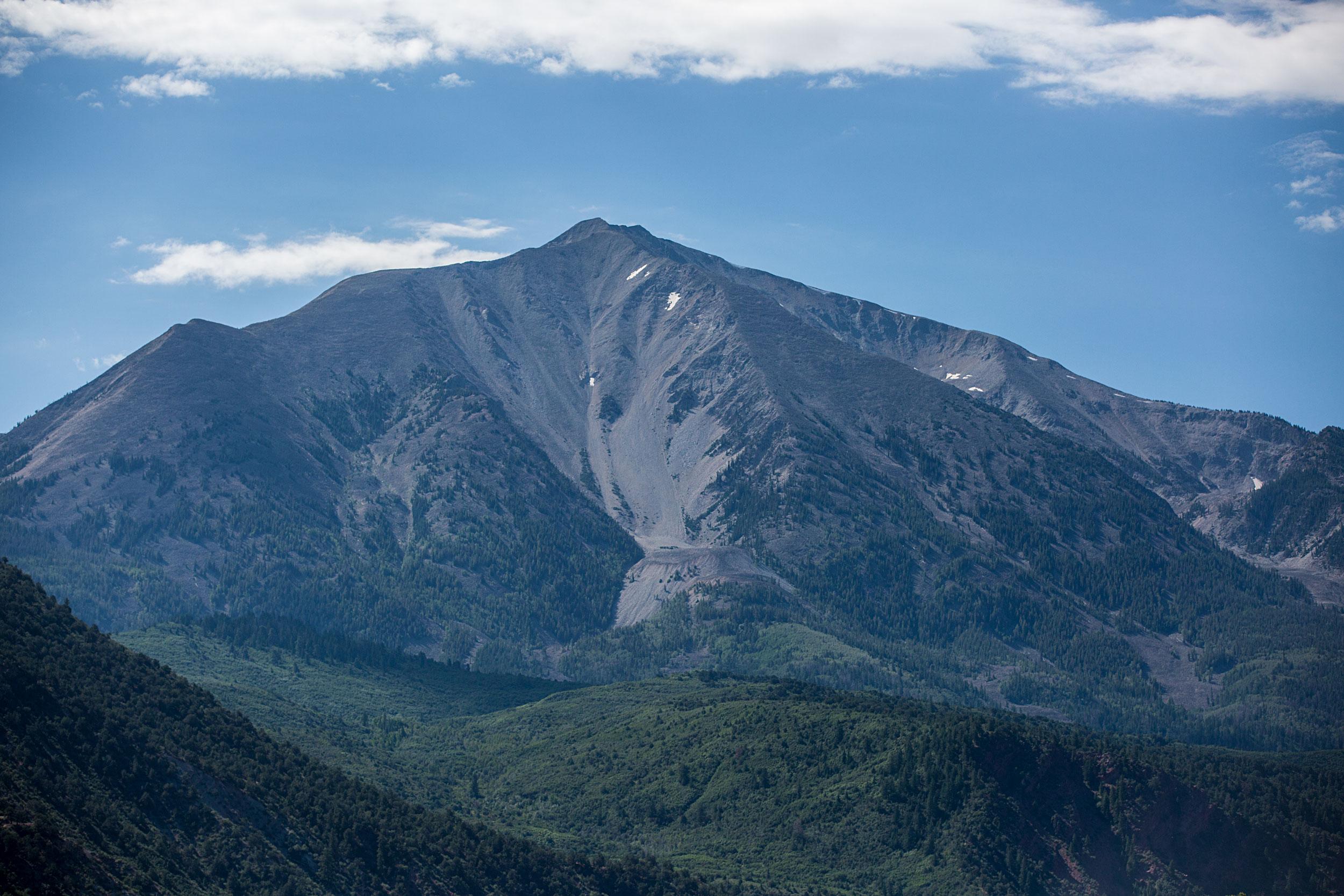
Public lands advocates and elected officials on Monday took a victory lap on a long-sought conservation initiative, but work remains if the effort to protect the Thompson Divide area from future mining will last.
Earlier this year, Interior Secretary Deb Haaland signed off on a public lands order withdrawing more than 220,000 acres of land in the Thompson Divide area from future mining, mineral and geothermal leasing. As an administrative action, the rule pulls that area off the table for two decades. Only a legislative solution from Congress could make the move permanent.
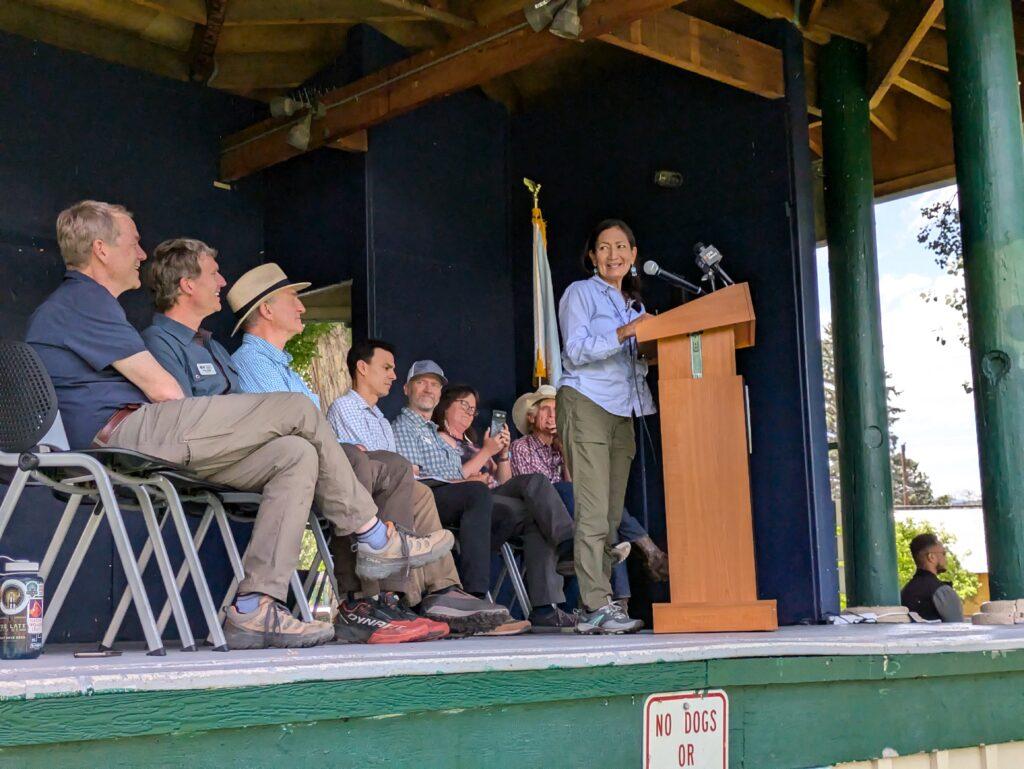
“Twenty years, it seems like a long time, but God it goes by in a flash sometimes,” Haaland said to an audience of dozens Monday at Carbondale’s Sopris Park. “It'd be great to not have to defend a challenge to the decisions that we make and instead concentrate on making this decision more durable like the Senator (Michael Bennet) wants to do.”
The Thompson Divide area roughly stretches from Glenwood Springs to Crested Butte and advocates have for years sought federal protections for the land. U.S. Sen. Michael Bennet, D. Colo. first introduced legislation to protect the area in 2013. In an interview after the event, he said conservation efforts that stretch on for years have the benefit of building wider support, which he said should make them more resilient to pushback.
“Obviously, I mean, all of us are impatient to make sure we protect the things that make Colorado so special and make the West so special,” Bennet said. “But my sense is that where you can build a coalition and where there's a real ground-up push for what you're trying to do that incorporates different point of views, you often get different points of view. You often get a result that might actually be more durable in the end.”
Haaland said the Biden Administration is committed to conserving at least 30% of U.S. lands and waters by 2030 as a part of the America the Beautiful initiative and that the Thompson Divide move is part of that effort.
“We have a shared obligation to future generations, and together we can build a future in which we honor nature, restore balance to our lands and waters and value every living creature on this planet,” Haaland said.
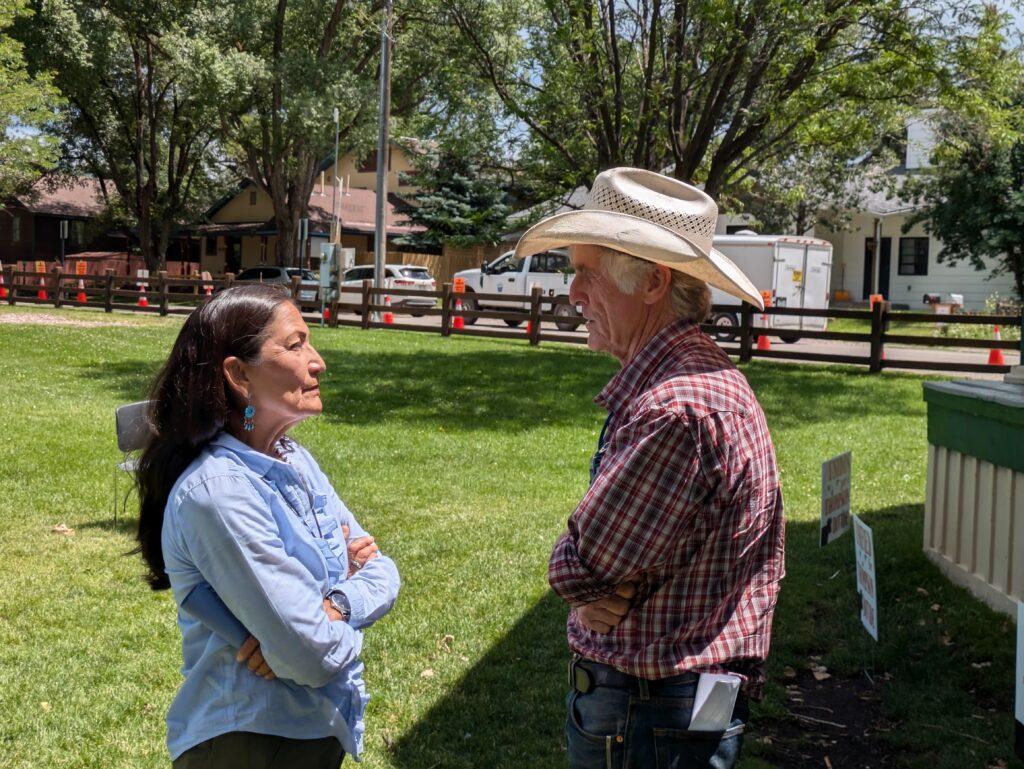
Congresswoman Lauren Boebert, whose district includes the Thompson Divide, has been critical of efforts to protect the area, calling a legislative push to do so “a land grab” that would restrict future oil and gas development.
CORE Act
The Biden Administration’s move for an administrative withdrawal does not mean that a permanent legislative solution is off the table. Bennet says the Colorado Outdoor and Recreation Economy Act, an expansive public lands bill that would address the Thompson Divide and other areas in the state, is still a possibility.
“It could be as early as the end of this year after the election,” Bennet told reporters about the Senate considering such a measure.
Public land bills rarely come up in Congress, Bennet said, and the most likely path forward for the CORE Act is a broader public land bill that incorporates similar long-sought measures elsewhere in the nation. The period after the election, but before the end of the year, is often referred to as the “lame duck” Congress and can be used to pass stalled overdue legislation.
“If we can get to a public lands bill in the lame duck session after the election's over, I think there's every reason to believe that we're going to be able to attach the CORE Act and we're going to fight very, very hard to do that. Put another way, I would not like to see a public lands bill pass the Senate that does not have the CORE Act as part of it and we're going to fight to make sure that it's in there,” Bennet said.
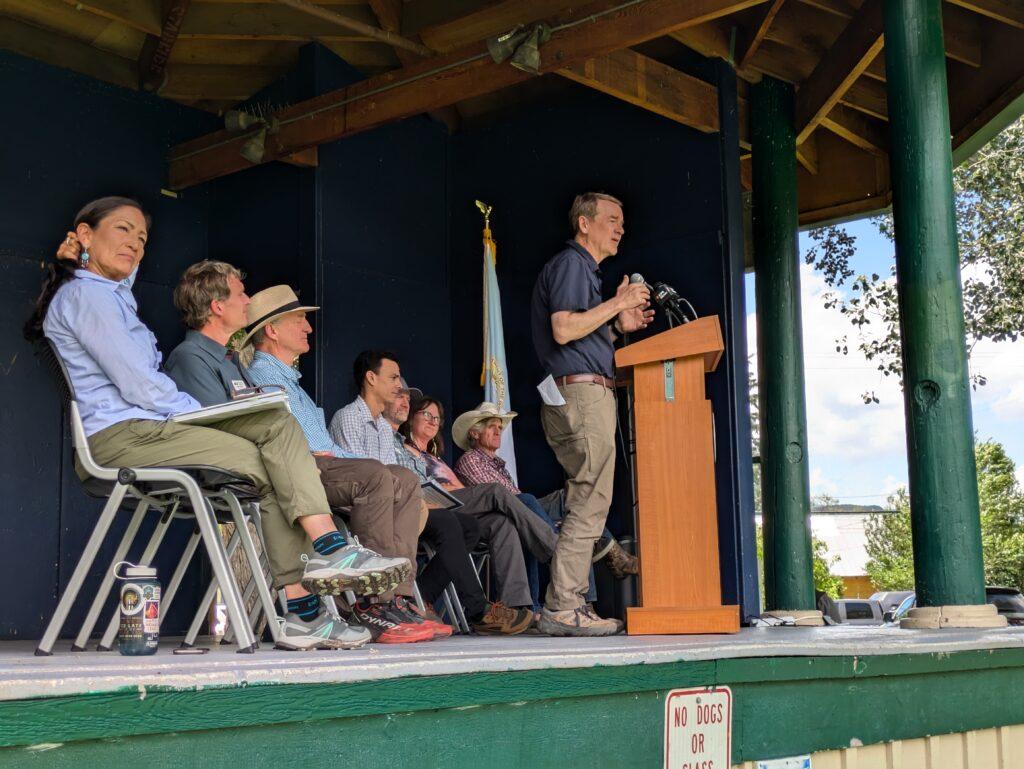
Bennet and others on the tour also stopped earlier on the other side of the Thompson Divide in Crested Butte. Mt. Emmons, known locally around Crested Butte as the Red Lady, is the site of another decades-long conservation fight, this one over molybdenum mining.
Mt. Emmons was included in the latest administrative withdrawal in a deal that saw a compromise between local advocates as well as the mining company, who agreed to walk away from the property in exchange for a land swap. In a statement, the Mt. Emmons Mining Company said the decision to work with land advocates on a land swap that would allow the company to more easily address other remediation issues was developed after conversations with local officials and advocates.
“MEMC understands that the preservation of recreational opportunities is in the best interest of the local community while providing MEMC the operational flexibility in reclamation and long-term site management focused on water treatment,” the statement reads.

